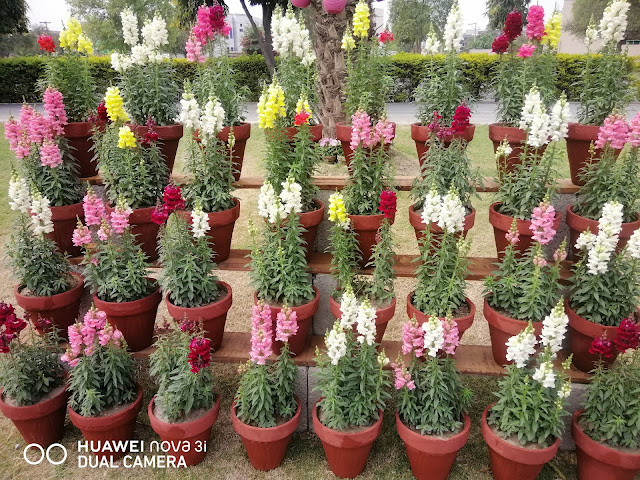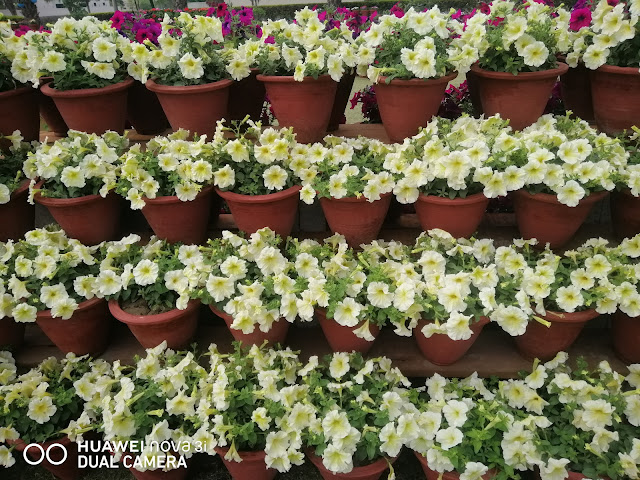Flowers | what are the flowers | merits and demerits of flowers
Flowers are the reproductive
structures found in flowering plants (also known as angiosperms). They are
responsible for producing seeds and fruits that contain the plant's offspring.

In this article, we are going too
discussed about the flowers. Merits of flowers, demerits of flowers, kinds of
flowers and some other topics about the flowers that’s are more search in the Google.
Flowers typically
consist of different parts, including the petals, sepals, stamens, and pistils
etc.
The petals are the colorful, often fragrant, parts of the flower that are used
to attract pollinators such as bees, butterflies, and hummingbirds. The sepals
are the green, leaf-like structures that protect the developing flower bud. The
stamens are the male reproductive structures that produce pollen, while the
pistil is the female reproductive structure that contains the ovary and the
stigma, where pollen is deposited.
There are many different types of
flowers, each with their own unique characteristics and uses. Some popular
examples include roses, daisies, sunflowers, and tulips.
what are the flowers impact on human life
Flowers have a significant impact
on human life, both culturally and biologically. Here are some ways in which
flowers affect our lives:
Aesthetics and Decor: Flowers are often used for
their beauty, colors, and fragrances to decorate homes, events, and public
spaces. Flowers also play an important role in art, literature, and fashion.
Medicinal properties: Many flowers contain
compounds that have medicinal properties and are used in traditional medicine
to treat various ailments. Examples include chamomile, lavender, echinacea, and
calendula.
Agriculture: Flowers play a vital role in
agriculture as they are responsible for pollination, which allows plants to
reproduce and produce fruits and seeds. Many crops that are important for human
consumption, such as fruits, vegetables, and nuts, rely on pollination by bees
and other insects.
Emotional impact: Flowers are often used as
symbols of love, friendship, sympathy, and congratulations. They are given as
gifts for special occasions, such as birthdays, weddings, and funerals, and can
have a powerful emotional impact on the recipient.
Environmental impact: Flowers provide habitat and
food for a variety of insects and animals, which helps maintain biodiversity
and ecological balance.
In summary, flowers have a
multifaceted impact on human life, ranging from their beauty and cultural
significance to their biological and ecological functions.
Merits of flowers
There are numerous merits of
flowers, including:
Beauty: Flowers are beautiful and come in a wide
range of colors, shapes, and sizes. They add vibrancy and liveliness to any space
and are often used in decorating homes, offices, and events.
Symbolism: Flowers are used to symbolize different
emotions and feelings. For example, roses are often associated with love, while
lilies are associated with purity and innocence. They can convey a message
without words and are often given as gifts to express love, gratitude, or
sympathy.
Fragrance: Many flowers are fragrant and can add a
pleasing aroma to the environment. They are often used in perfumes, candles,
and aromatherapy.
Health benefits: Many flowers have medicinal
properties and are used in traditional medicine to treat various ailments. They
contain compounds that have anti-inflammatory, anti-bacterial, and anti-viral
properties.
Ecological benefits: Flowers provide habitat and food
for a variety of insects and animals, including bees, butterflies, and birds.
They play a vital role in maintaining biodiversity and ecological balance.
Pollination: Flowers are responsible for
pollination, which is essential for the reproduction of many plants. This, in
turn, supports the growth of crops that are important for human consumption.
In summary, flowers have many
merits, including their beauty, symbolism, fragrance, health benefits,
ecological benefits, and role in pollination. They are an essential part of the
natural world and have a significant impact on human life.
Demerits of flowers
While flowers have numerous
merits, there are also some potential demerits to consider:
Allergies: Some people are allergic to certain
types of flowers, and exposure to pollen or the fragrance of flowers can cause
respiratory problems or skin irritation.
Environmental impact: While flowers provide
habitat and food for many insects and animals, they can also have a negative
impact on the environment. The use of pesticides and herbicides on flower crops
can harm pollinators and other beneficial insects. Additionally, the water and
energy required to grow and transport flowers can have a negative impact on the
environment.
Economic impact: The flower industry is often
criticized for its labor practices and the impact it has on local economies. In
some cases, workers in flower production may be subjected to poor working
conditions, low wages, and exploitation.
Waste: Flowers have a limited lifespan and often
end up as waste once they wilt or die. This can contribute to environmental
problems if they are not disposed of properly.
Cost: Flowers can be expensive, especially for
rare or exotic varieties. This can make them inaccessible to some people or
result in financial strain for those who purchase them.
In summary, while flowers have
many benefits, there are also some potential downsides to consider, including
allergies, environmental impact, economic impact, waste, and cost. It's
important to weigh these factors when considering the use of flowers in various
contexts.
Kinds of flowers
There are countless varieties of
flowers in the world, but here are some common types of flowers:
- Roses
- Sunflowers
- Tulips
- Daisies
- Lilies
- Orchids
- Irises
- Carnations
- Pansies
- Marigolds
- Peonies
- Hydrangeas
- Daffodils
- Chrysanthemums
- Geraniums
- Petunias
- Snapdragons
- Zinnias
- Lavender
- Gladiolus
These are just a few examples,
and there are many more beautiful and unique flowers to discover!
How many main kinds of flowers in different countries?
It's difficult to provide an
exact number as there are thousands of different types of flowers found across
the world, and the number varies depending on the region and the criteria used
to define a "kind" of flower. However, here are a few examples of the
main types of flowers that are commonly found in different countries:
In the United States, some of the most popular
types of flowers include roses, lilies, tulips, sunflowers, daisies, and
irises.
In Japan, some of the most well-known flowers
include cherry blossoms, chrysanthemums, peonies, and camellias.
In India, some of the most commonly found flowers
include lotuses, marigolds, jasmine, and hibiscus.
In the Netherlands, the country is famous for its
tulips, which come in a wide range of colors and varieties.
In Kenya, the country is known for its production
of roses, which are a major export crop.
Again, these are just a few
examples, and there are countless other types of flowers found throughout the
world.
how many kinds of flowers in Pakistan
Pakistan is home to a wide
variety of flowers due to its diverse geography and climate. However, it's
difficult to provide an exact number as there are thousands of different types
of flowers found in the country. Some of the commonly found flowers in Pakistan
include jasmine, rose, marigold, petunia, sunflower, lily, iris, hibiscus, and
chrysanthemum. In addition, Pakistan is also known for its production of roses,
which are exported to different countries. There are also several species of
wildflowers found in the northern regions of Pakistan, such as the Himalayan
blue poppy and the Himalayan cobra lily.
FAQ's about flowers
Here are some frequently asked questions (FAQs) about
flowers:
What are flowers?
Flowers are the reproductive organs of flowering plants.
They are the part of the plant that produces seeds, which eventually grow into
new plants.
Why do flowers have different colors?
Flowers have different colors as a way to attract
pollinators like bees, butterflies, and birds. The bright colors and patterns
help to signal to pollinators that there is nectar and pollen available.
What is the significance of flowers in different cultures?
Flowers have been used as symbols in various cultures
throughout history. They are often associated with love, friendship, and
mourning. Different flowers are also associated with different meanings. For
example, red roses are commonly associated with love and passion, while white
lilies are often associated with purity and innocence.
What are some popular flowers used in bouquets?
Some popular flowers used in bouquets include roses, lilies,
tulips, daisies, and carnations. These flowers are often chosen for their
beauty, fragrance, and symbolic meanings.
How do I care for fresh cut flowers?
To care for fresh cut flowers, it's important to keep them
hydrated and away from direct sunlight. Change the water in the vase every few
days and trim the stems at an angle to help them absorb water more easily. Some
flowers may also benefit from adding flower food to the water.
What is the difference between annual and perennial flowers?
Annual flowers complete their life cycle in one growing
season and need to be replanted every year. Perennial flowers, on the other
hand, can live for multiple growing seasons and do not need to be replanted
each year.
In the last, I hope you did enjoy
this article. In the next articles, we will discussed about the different kinds
of flowers, pollinations of flowers, how to grow flowers in home. Keep visiting
our latest articles.







